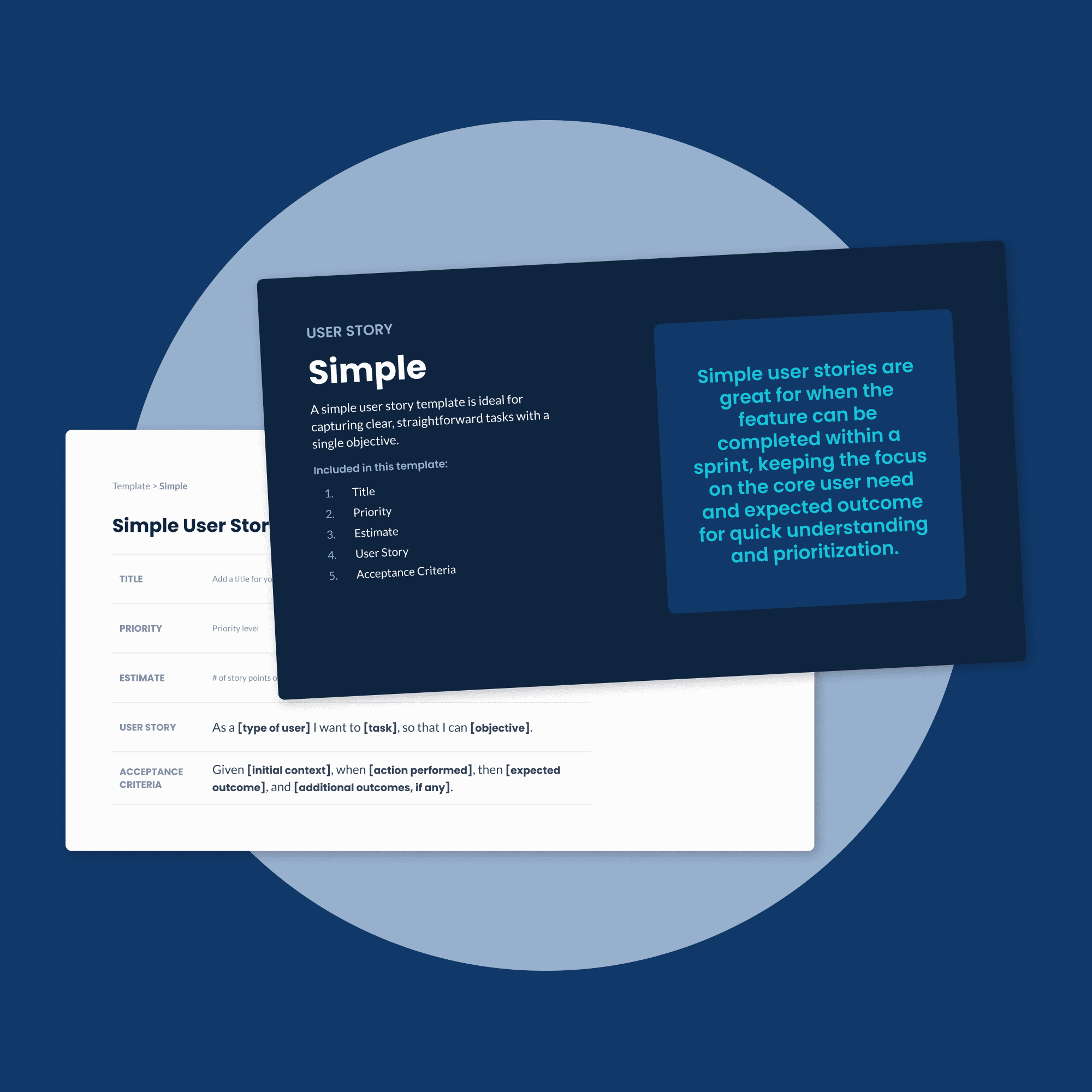Updated: January 24, 2025- 11 min read
Product stakeholders are individuals or groups invested in a product's development, success, and growth. These can include internal team members like executives and developers, as well as external entities such as customers and regulatory bodies. Managing these stakeholders is essential for product managers, as their feedback and expectations shape the product's trajectory.
Stakeholders influence every stage of development, from ideation to launch. This guide outlines the types of stakeholders, their roles, and strategies to collaborate effectively. It also covers ways to identify key stakeholders, foster strong relationships, and resolve conflicts to keep your product on track.
“What I have found is that relationships are better than roadmaps. Understand who your stakeholders are, who your partners are, what's important for them, and how they’re trying to deliver on the vision that you all share. Establish that first and invest in those relationships to understand what's truly at stake.”
— Jay Lee, the SVP of the NBA — the type of association where stakeholders hold immense importance — illuminates this purpose on The Product Podcast
Free User Persona Template
Get to know your users to build the right solution for the right audience.
Get Yours Now
What Is a Product Stakeholder?
A product stakeholder is anyone who has an interest in or is affected by the development and performance of a product. They are key players in the product’s journey, as their insights, expectations, and requirements significantly influence decision-making at every stage.
Why are stakeholders essential in product management?
Stakeholders bring diverse perspectives, which enrich the product development process. Each stakeholder contributes unique expertise, priorities, and goals that help shape a well-rounded, customer-centric product.
Stakeholder management is an essential Product Manager skill. The fact of the matter is, the product manager role is located right in the middle of business, tech, and engineering. So balancing diverse interests is baked into the job description! By engaging stakeholders effectively, product managers can:
Align product strategies with organizational objectives.
Gain critical insights into user needs and market demands.
Secure buy-in for resources and prioritization decisions.
Anticipate potential roadblocks and proactively address them.
Examples of Product Stakeholders
To better understand the role of stakeholders, let’s look at some examples:
Executives: Provide strategic direction and allocate resources to ensure the product aligns with broader business goals.
Engineering Teams: Build the product and iterate on deliverables based on feedback from other stakeholders.
Design Teams: Craft intuitive and visually appealing experiences that resonate with end-users and align with product goals.
Customers and End-Users: Interact with the product directly, offering feedback that shapes features, usability, and overall value.
Regulatory Bodies: Establish compliance requirements the product must meet to be legally and ethically viable.
In essence, stakeholders act as collaborators who contribute to and are impacted by the product’s outcomes. Understanding who they are and what they bring to the table is the first step toward effective stakeholder management.
Types of Product Stakeholders
Stakeholders in product management can be categorized into various types based on their roles, level of involvement, and influence. Understanding these categories helps product managers tailor their communication and collaboration strategies.
Internal vs. external stakeholders
Internal Stakeholders: These are individuals or teams within your organization who directly interact with and impact the product. Examples include:
Executives: Allocate resources, evaluate product outcomes, and ensure alignment with organizational goals.
Engineering teams: Build and maintain the product, adapting based on feedback from other stakeholders.
Design teams: Create workflows, prototypes, and interfaces that enhance the user experience.
Marketing teams: Develop campaigns and assets to connect the product with its target audience.
Customer support: Engage directly with users to resolve issues and relay critical feedback to the product team.
External Stakeholders: These are individuals or groups outside the organization who interact with the product in various ways. Examples include:
Customers: Use the product to solve problems or meet specific needs, often purchasing or funding it, and providing feedback that informs future updates.
End-Users: Interact with the product’s features directly, shaping its adoption and success. Customers and end-users may overlap, but while customers make purchasing decisions, end-users are typically the ones engaging with the product daily.
Partners: Integrate the product into their own ecosystems or collaborate on co-marketing efforts.
Regulatory Bodies: Define the compliance landscape, influencing design and functionality choices.
Primary vs. secondary stakeholders
Primary Stakeholders: These are decision-makers and individuals directly involved in the product’s development and success. Their influence is typically higher, and they interact with the product frequently. Examples include executives, product teams, and key customers.
Secondary Stakeholders: These individuals or groups have an indirect interest in the product. They may not interact with it daily but are still affected by its outcomes, such as industry consultants, online communities, and third-party developers who build integrations for your product.
Market vs. non-market stakeholders
Product Market Stakeholders: These are entities that operate within the product’s market ecosystem, such as customers, competitors, suppliers, and distributors. Their interactions often focus on driving value, competitive positioning, and market share.
Non-Market Stakeholders: These stakeholders operate outside the market’s immediate competitive environment. Examples include regulatory agencies, special interest groups, and online communities. Their influence often centers on ethical, legal, or social considerations, impacting the broader perception of the product.
By understanding these categories and their unique interactions with the product, product managers can better prioritize stakeholder needs, address potential conflicts, and align everyone toward the product’s success.
Identifying Product Stakeholders
Stakeholder analysis is a crucial step in the product development process. Product managers must ensure that all relevant voices are heard to make informed decisions and deliver a successful product.

Techniques for identifying stakeholders
Stakeholder Mapping: Create a visual representation of all potential stakeholders, categorizing them based on their influence, interest, and involvement in the product.
Interviews and Surveys: Conduct discussions with teams and individuals to identify who will interact with the product and be impacted by its outcomes.
Review Organizational Charts: Analyze your company’s structure to identify internal stakeholders, such as executives and cross-functional teams.
Analyze Customer Segments: Identify key customer personas and external groups that will use or be affected by the product.
Feedback Loops: Use existing feedback channels, such as customer support or user research, to identify stakeholders who consistently engage with the product.
Categorizing stakeholders
Once identified, stakeholders can be categorized using tools such as:
1. Influence/Interest Matrix: Classify stakeholders based on their level of influence over the product and their interest in its success.

High Influence/High Interest: These stakeholders, such as executives or major customers, are critical decision-makers. Engage them closely to ensure alignment and support.
High Influence/Low Interest: Examples include regulatory bodies or legal teams. Keep them informed and involved as needed to mitigate risks.
Low Influence/High Interest: End-users often fall into this category. Actively seek their feedback in regards to the product experience to improve usability and adoption.
Low Influence/Low Interest: This group might include external consultants or minor vendors. Keep them informed but allocate minimal resources for engagement.
2. RACI Matrix: Use the RACI model (Responsible, Accountable, Consulted, Informed) to define roles and responsibilities for key stakeholders in decision-making and implementation processes.
3. Stakeholder Personas: Develop detailed personas for each stakeholder group to better understand their motivations, needs, and potential pain points.
4. Stakeholder scoring: Score each stakeholder based on their role, interest, and relative influence on the product.
Engaging identified stakeholders
Prioritize Engagement: Focus on high-influence, high-interest stakeholders first to ensure alignment on critical decisions.
Tailor Communication: Customize how you communicate with each stakeholder group to match their level of involvement and expertise.
Iterate Regularly: Revisit and update your stakeholder list as the product evolves to ensure no key voices are missed.
Identifying stakeholders early and systematically ensures smoother collaboration, better alignment, and a higher likelihood of product success.
Example of Internal Stakeholder Collaboration and Clashes
Consider a SaaS company developing an AI-powered analytics dashboard aimed at helping mid-sized businesses improve their operational efficiency. This initiative brings together multiple stakeholders:
Executives: Focus on the dashboard’s revenue potential and scalability. They aim to position the feature as a flagship product offering to attract larger enterprise clients.
Engineering Teams: Address the technical complexity, such as ensuring real-time data processing and seamless integration with existing systems. They may push back on aggressive timelines set by other stakeholders.
Design Teams: Prioritize creating an intuitive user experience with visually engaging dashboards and easy navigation, aiming to reduce onboarding friction for new users. They may chafe at a minimal viable product (MVP) that is very bare bones.
Customers and End-Users: Request specific features like customizable reports and predictive analytics, which directly impact their daily decision-making processes.
Marketing Teams: Strategize on positioning the dashboard to outshine competitors, focusing on clear messaging around ease of use and advanced AI capabilities. They may want to rush the release to coincide with an important industry event.
Potential conflicts of interest
Timeline vs. Quality: Executives may push for a quicker release to capitalize on market demand, while engineers and designers emphasize the importance of quality and usability testing.
Feature Prioritization: Customers demand robust customization options, which could delay the MVP launch that executives want to hit revenue goals, or frustrate the marketing team with their lack of broad appeal.
Resource Allocation: Marketing may request additional budget for a large-scale launch campaign, potentially diverting resources from engineering or user research.
Asking for a friend: Do you have to do what stakeholders say?
In a Product School AMA, we asked Maggie Crowley, Director of Product at Drift, she says to stakeholders who want to bypass discovery or don’t see value in creating 1-pagers and want to go straight to JIRAs.
Her answer:
“This is pretty much NEVER a good idea, I’ve been burned every time I skip this step. For these stakeholders, I will just do it anyway on the side. Even just spending an hour writing up the problem and outlining some open questions can help – especially if you then start to ask that stakeholder those open questions often times I find that the person has a couple of foundational assumptions that either I don’t have/share or they’ve just gotten too excited and need to take a minute to think.”
Tips to Manage Product Stakeholder Relationships
Effectively managing stakeholder relationships requires a mix of strategy, empathy, and communication. Here are some actionable tips:
Set Clear Expectations: Define the scope, timelines, and deliverables upfront to ensure all stakeholders are aligned from the beginning.
Communicate Regularly: Provide transparent updates through syncs, reports, dashboards, and product retrospectives to keep stakeholders informed and engaged. Create a clear product roadmap and share the roadmap with stakeholders.
Build Trust: Foster trust through consistent actions, honesty, and reliability. A trustworthy relationship minimizes friction and builds long-term support.
Leverage Stakeholder Mapping: Use tools like influence/interest matrices discussed above to prioritize engagement efforts based on stakeholder importance and involvement.
Encourage Collaborative Decision-Making: Involve stakeholders in key decisions to foster a sense of ownership and reduce resistance to changes.
Resolve Conflicts Proactively: Address disagreements early through open dialogue, focusing on data-driven insights and shared goals.
Practice Empathy and Active Listening: Understand stakeholder needs and concerns by truly listening to their feedback and perspectives.
Back Up Decisions with Data: Use data-driven insights to justify decisions, ensuring stakeholders understand the rationale behind prioritization and trade-offs.
Balance Short-Term and Long-Term Needs: While addressing immediate priorities, ensure that actions align with long-term stakeholder trust and product goals.
Document Decisions and Feedback: Maintain a record of stakeholder inputs and decisions to refer back to during disagreements or reviews.
Want more tips and tricks? Check out this practical guide from Zipcar Group PM Kaitlyn Kirkaldy:
The Power of Product Stakeholder Categorization
Stakeholders are like the threads in a fabric, each one contributing to the strength and resilience of the whole. When managed well, these relationships can transform challenges into opportunities and align diverse perspectives toward a unified product vision. Of course, if you’ve ever gotten a snag in your sweater, you know how just one broken thread can unravel the whole thing. When product stakeholders are poorly managed, it can lead to misalignment, missed deadlines, and a product that fails to meet its full potential.
In this guide, we explored the critical role stakeholders play in product management—from shaping the product's direction to balancing competing priorities. We categorized stakeholders, discussed strategies for identifying and engaging them, and outlined actionable tips to foster collaboration and resolve conflicts.
As a product manager, your ability to manage these relationships effectively is key to building a product that not only meets organizational goals but also resonates with users. Embrace transparency, back your decisions with data, and cultivate trust across every interaction. By viewing stakeholders as partners in the journey, you can unlock the full potential of your product and drive meaningful impact.
User Story Templates
Our User Story Templates keep product development centered on real user needs and objectives. Available in 4 formats, they're easy to use whether you're planning a small feature or a full program!
Free download
Updated: January 24, 2025





